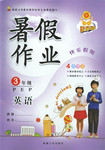题目内容
At one time, computers were expected largely to remove the need for paper copies of documents because they could be stored electronically. But for all the texts that are written, stored and sent electronically, a lot of them are still ending up on paper.
It is difficult to measure the quantity of paper used as a result of use of Internet-connected computers, although just about anyone who works in an office can tell you that when e-mail is introduced, the printers start working overtime. “I feel in my bones this revolution is causing more trees to be cut down,” says Ted Smith of the Earth Village Organization.
Perhaps the best sign of how computer and Internet use pushes up demand for paper comes from the high-tech industry itself, which sees printing as one of its most promising new markets. Several Internet companies have been set up to help small businesses print quality documents from a computer. Earlier this week Hewlett-Packard Co. announced a plan to develop new technologies that will enable people to print even more so they can get a hard copy of a business document, a medical record or just a one-line e-mail, even if they are nowhere near a computer. As the company sees it, the more use of the Internet the greater demand for printers .
Does all this mean environmental concerns have been forgotten? Some activists suggest people have been led to believe that a lot of dangers to the environment have gone away. “I guess people believe that the problem is taken care of, because of recycling (回收利用)?” said Kelly Quirke, director of the Rainforest Action Network in San Francisco. Yet Quirke is hopeful that high-tech may also prove helpful. He says printers that print on both sides are growing in popularity. The action group has also found acceptable paper made from materials other than wood, such as agricultural waste.
1. The growing demand for paper in recent years is largely due to ____.
A. the rapid development of small businesses B. the opening up of new markets
C. the printing of high quality copies D. the increased use of the Internet
2. Environmentalists believe one possible way of dealing with the paper situation is ____.
A. to encourage printing more quality documents B. to develop new printers using recycled paper
C. to find new materials for making paper D. to plant more fast-growing trees
3. Hewlett-Packard Co. has decided to develop new technologies because ____.
A. people are concerned about the environment B. printers in many offices are working overtime
C. small companies need more hard copies D. they see a growing market for printers
4.What would be the best title for the text?
A. Computers and Printers B. E-mail and the Business World
C. Internet Revolution and Environment D. Modern Technology and New Markets
1.D
2.C
3.D
4.C
【解析】
1.推理题,根据第一段But for all ...ending up on paper.可知大部分存在电脑里的文件最终还要打印在纸上,故可推理出答案D.
2.细节题,根据第四段The action group has also founnd acceptable paper made from materials other than wood,可知选C.
3.推理题,根据第三段Earliesr thes week...that will enable people to print even more so they can get ...可推理出发展新的技术可以使人们打印更多的文件,故选D.
4.推理题,文章主要讲的是因特网的发展与其对环境的影响,故选C.

 第三学期赢在暑假系列答案
第三学期赢在暑假系列答案 学练快车道快乐假期暑假作业新疆人民出版社系列答案
学练快车道快乐假期暑假作业新疆人民出版社系列答案My six-year-old granddaughter, Caitlyn, and I stopped at a Tim Horton’s shop for a blueberry cake. As we were going out of the door, a young teenage boy was coming in.
This young man had no hair on sides of his head with a set of blue spiked(竖起的)hair on top of it. One of his nostrils(鼻孔) was pierced (扎、穿), and a ring ran through the hole and a chain went across his face and was attached to a ring he was wearing in his ear. He held a skateboard under one arm and a basketball under the other.
Caitlyn, who was walking ahead of me, stopped at once when she saw the teenager, I thought he’d scared her and she’d frozen on the spot.
I was wrong.
My granddaughter backed up against the door and opened it as wide as it would go. Now I was face to face with the young man. I stepped aside and let him pass. His response was a polite “Thank you very much”.
On our way to the car, I praised Caitlyn for her manners in holding open the door for the young man. She didn’t seem to be troubled by his appearance, but I wanted to make sure. If a grandmother’s talk about freedom of self-expression and allowing people their differences was in order, I wanted to be ready.
As it turned out, the person who needed the talk was me.
The only thing Caitlyn noticed about the teenager was the fact that his arms were full. “He would have a hard time to open the door. ”
I saw the partially shaved head, the set of spiked hair, the piercing and the chain. She saw a person carrying something under each arm and heading toward a closed door.
In the future, I hope to get down on her level and raise my sights.
【小题1】What did the author think of the young man?
| A.Polite. | B.Uncommon. | C.Frightening. | D.Funny. |
| A.she was scared | B.she didn’t notice his look |
| C.she wanted to avoid him | D.it would be difficult for him to open the door |
| A.the author was ashamed of herself |
| B.the author didn’t know how to give a talk on freedom |
| C.a talk on freedom was useless for the granddaughter |
| D.people should have more freedom to express themselves |
| A.we shouldn’t judge a person by his look |
| B.we should allow people more freedom to dress differently |
| C.we should be more helpful and tolerant(宽容的)to people |
| D.we shouldn’t be too particular about people in life |
On a sunny day last August, Tim heard some shouting. Looking out to the sea carefully, he saw a couple of kids in a rowboat were being pulled out to sea.
Two 12-year-old boys, Christian and Jack, rowed out a boat to search for a football. Once they'd rowed beyond the calm waters, a beach umbrella tied to the boat caught the wind and pulled the boat into open water. The pair panicked and tried to row back to shore. But they were no match for it and the boat was out of control.
Tim knew it would soon be swallowed by the waves. "Everything went quiet in my head," Tim recalls(回忆). "I was trying to figure out how to swim to the boys in a straight line."
Tim took off his clothes and jumped into the water. Every 500 yards or so, he raised his head to judge his progress. "At one point, I considered turning back," he says. "I wondered if I was putting my life at risk." After 30 minutes of struggling, he was close enough to yell to the boys, "Take down the umbrella!" Christian made much effort to take down the umbrella. Then Tim was able to catch up and climb aboard the boat. He took over rowing, but the waves were almost too strong for him.
"Let's aim for the pier(码头)," Jack said. Tim turned the boat toward it. Soon afterward, waves crashed over the boat, and it began to sink. "Can you guys swim?" he cried. "A little bit," the boys said. Once they were in the water, Tim decided it would be safer and faster for him to pull the boys toward the pier. Christian and Jack were wearing life jackets and floated on their backs. Tim swan toward land as water washed over the boys' faces.
“Are we almost there?” they asked again and again. "Yes," Tim told them each time. After 30minutes, they reached the pier.
【小题1】Why did the two boys go to the sea?
| A.To go boat rowing. |
| B.To get back their football. |
| C.To swim in the open water. |
| D.To test the umbrella as a sail. |
| A.The beach. | B.The water. |
| C.The boat. | D.The wind. |
| A.To take in enough fresh air. |
| B.To consider turning back or not. |
| C.To check his distance from the boys. |
| D.To ask the boys to take down the umbrella. |
| A.They were dragged to the pier by Tim. |
| B.They swam to the pier all by themselves. |
| C.They were washed to the pier by the waves. |
| D.They were carried to the pier by Tim on his back. |